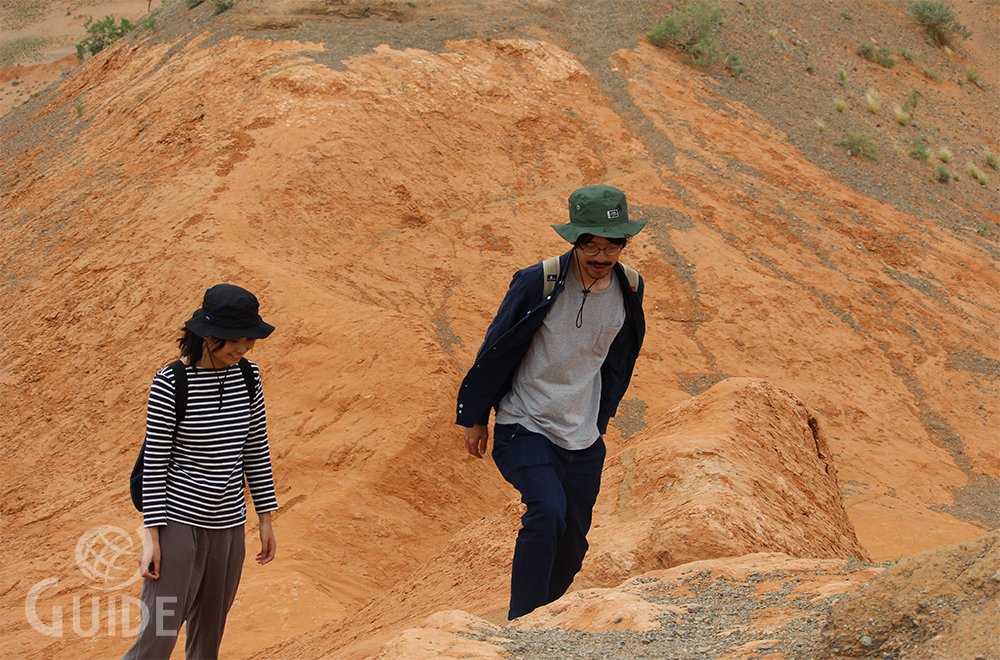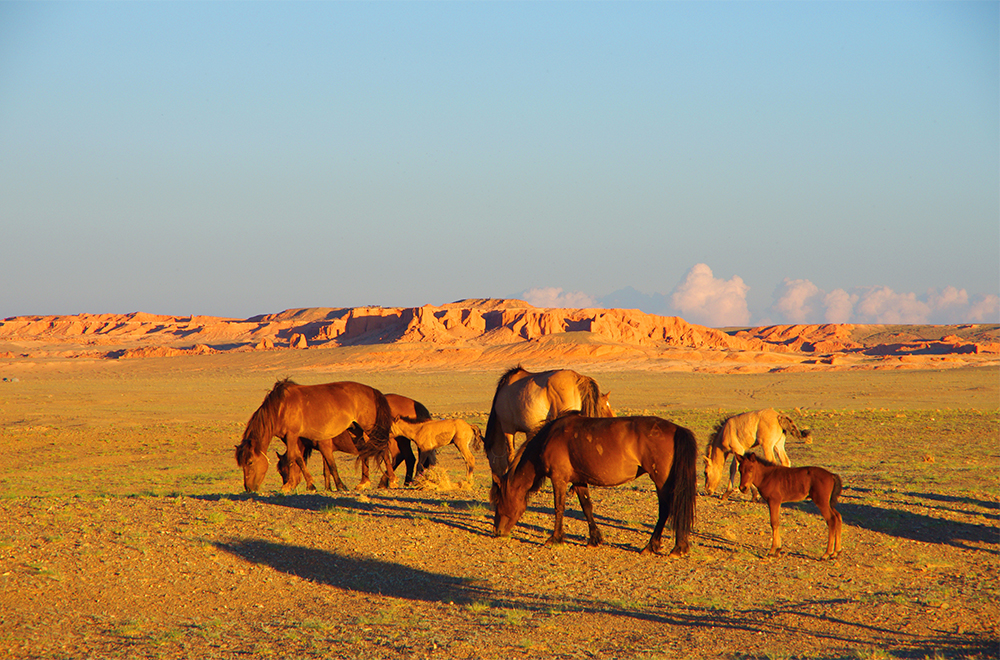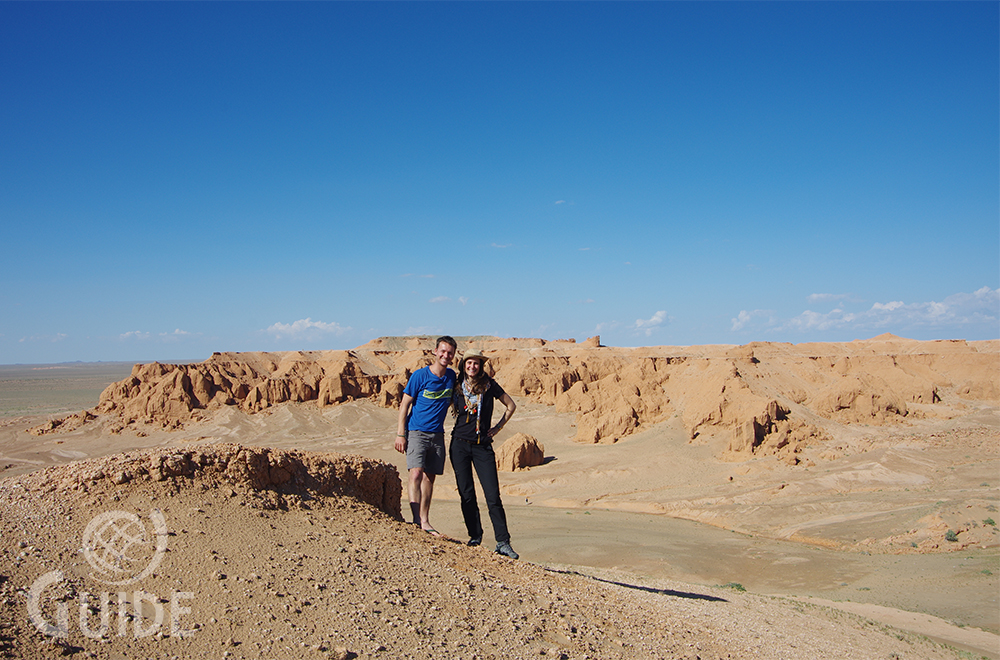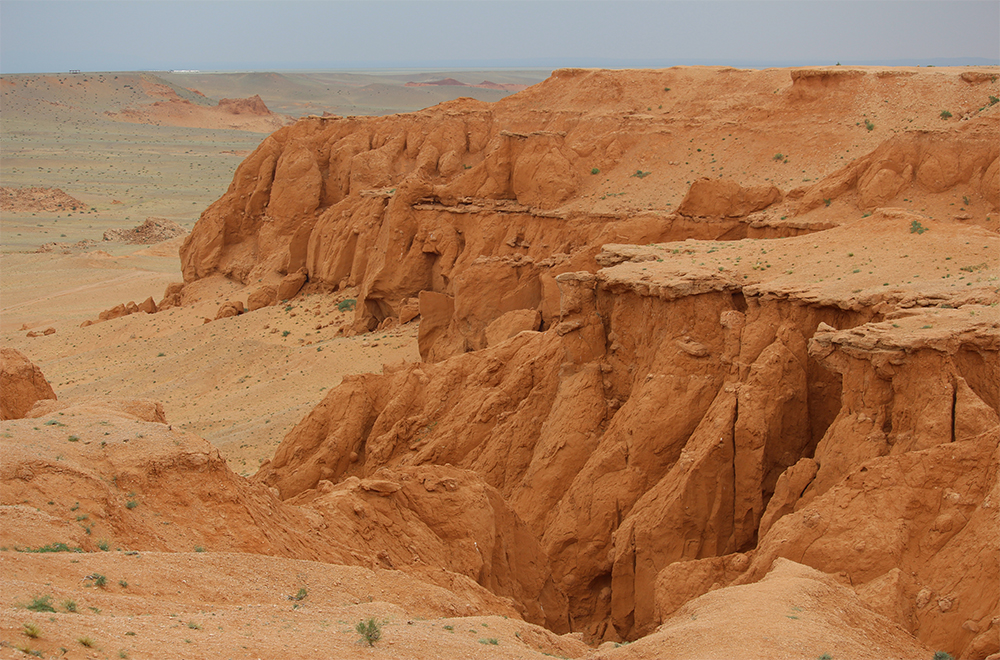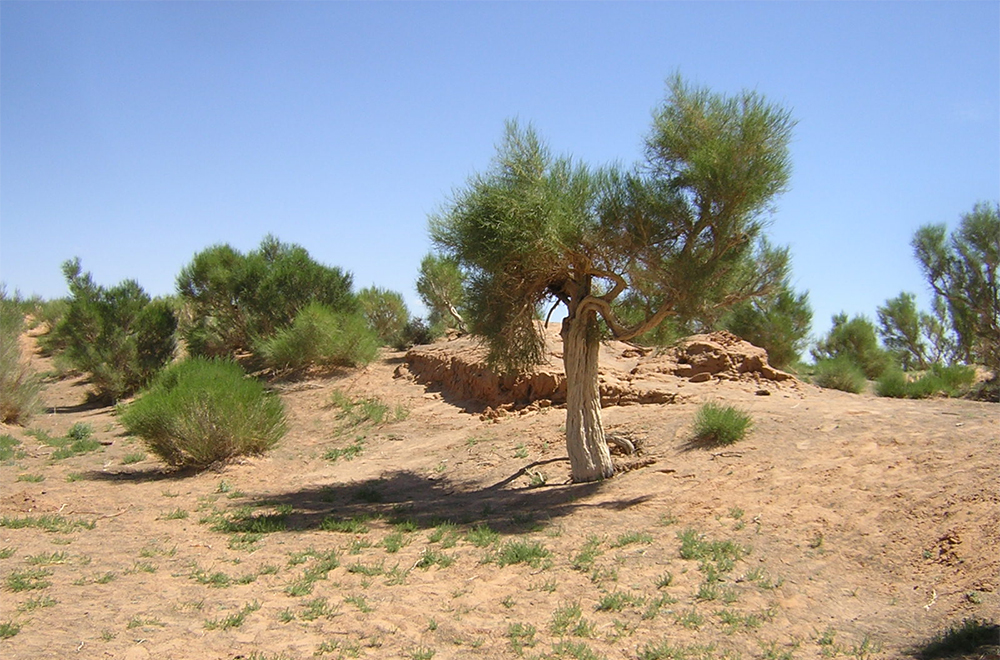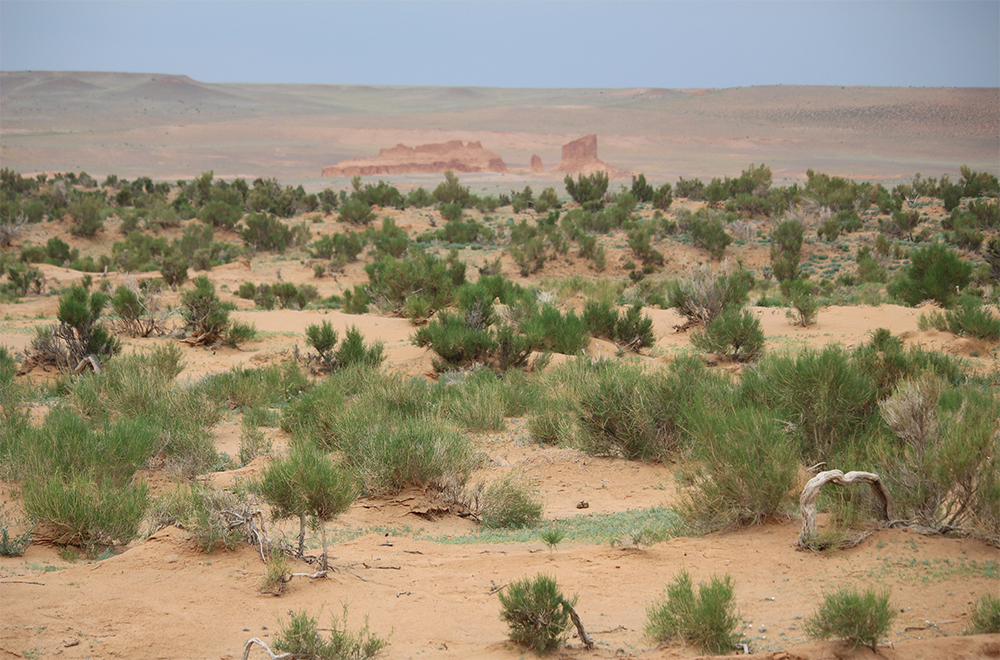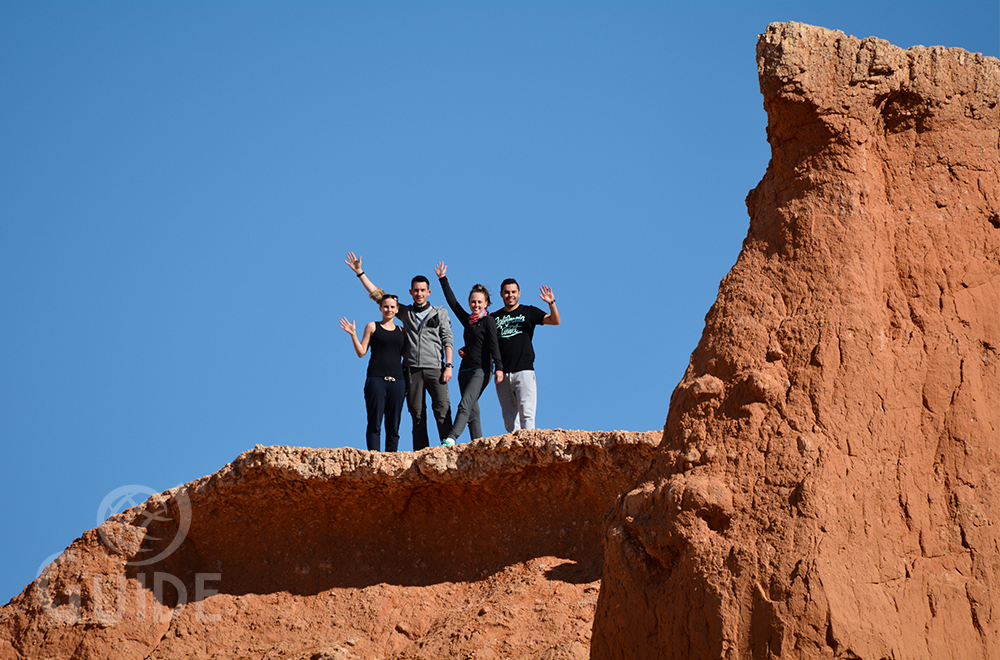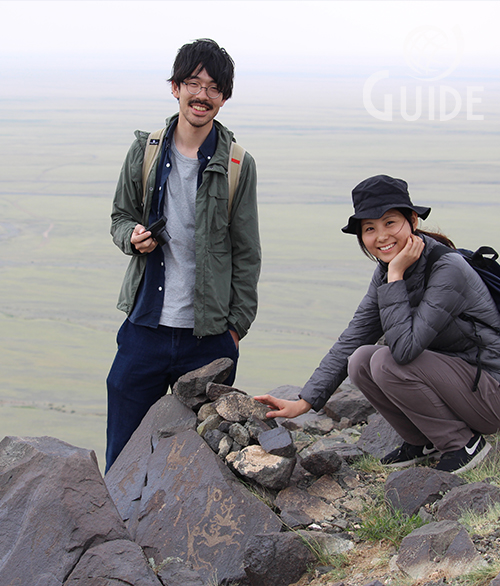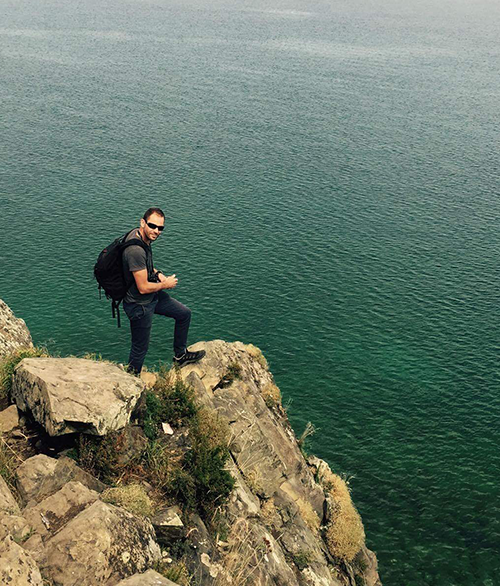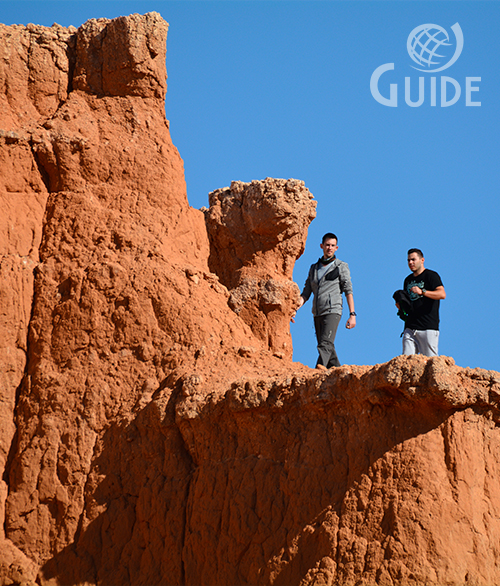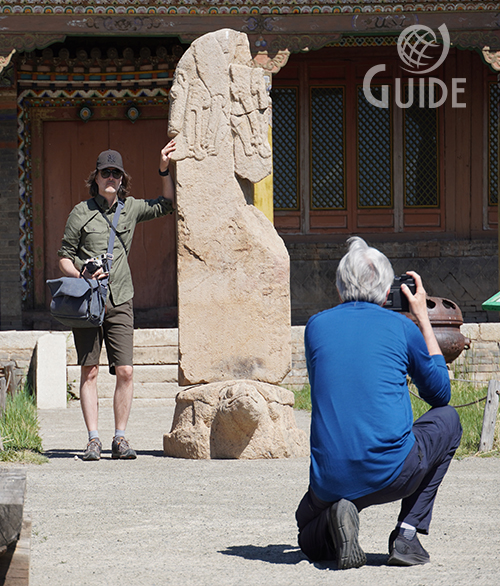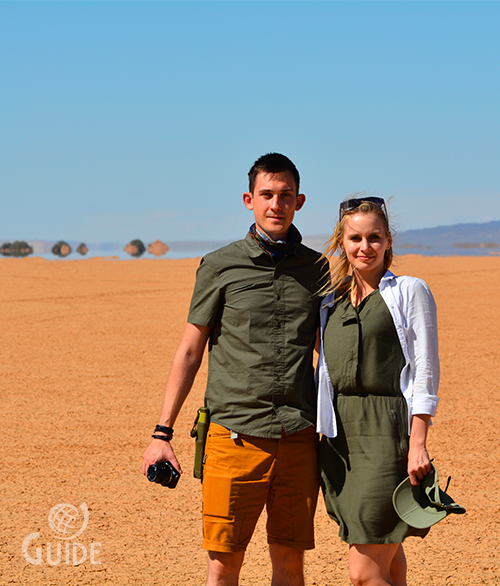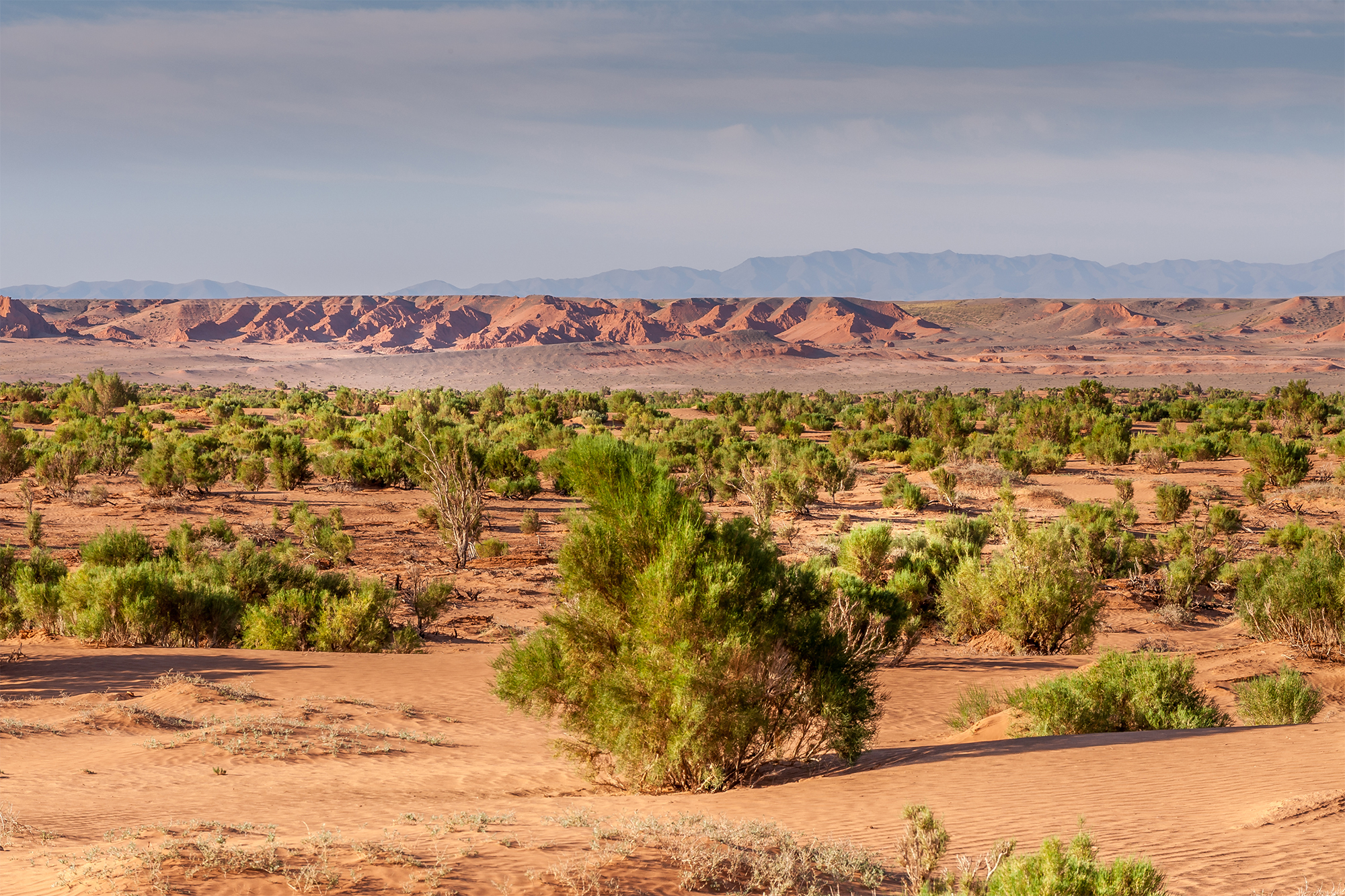
BAYANZAG
The place was the first in the world to discover that dinosaurs reproduced with eggs. In the 1920s, famous American paleontologist Roy Chapman Andrews’ expedition was doing diverse research in Bayanzag. During their expedition, they called it “Flaming Cliffs” because the cliffs looked like burn on fire during sunset. This name has been handed down to this day and has become a name frequently used by paleontologists around the world. Famous stories and explorations related to Chapman’s discoveries made the Bayanzag and Mongolian Gobi a world-famous and crucial place in a field of paleontology.
The area of Bayanzag is muddy sediments, 5 km wide and 8 km long, extending from south to north in the valley along the Arts Bogd mountains in the territory of Umungovi (South Gobi) province. The name Bayanzag is derived from saxaul trees (Zag in Mongolian) and Bayanzag means literally “Rich with saxaul trees” because the saxaul trees grow densely in the area. Mongolians call the place "tsav" where the red sandy clay soil has hardened and petrified. Whereas a little higher place is called "tsonj". The height of Bayanzag’s “tsonj” reaches 20-50 meters.
The Central Asiatic Expeditions led by Roy Chapman Andrews discovered an egg-brooding dinosaur, theropod Oviraptor, which would become part of the history of paleontology. Also, in Bayanzag, the hatched dinosaur egg embryos were disclosed for the first time in the world and it became a major discovery in the history of world science.
Furthermore, this extremely rich fossil location, Bayanzag has provided not only the remains of ancient flora and fauna but also large traces of ancient human habitation. Also, the place was deeply connected to the history of the "Tea Road", a major world trade route connected Asia and Europe. Pieces of evidence prove that camel caravans transported bricks of tea from Beijing to Khukh Hota, entered Mongolia through the current Gashuun Sukhait port and passed through Bayanzag to Kharkhorin, Uliastai, Khovd and then finally reached Turkestan and Kashgar.
Moreover, Bayanzag has a large reserve of animals, plants, and birds, which are the main representatives of the Gobi Desert. The Gobi Desert is a key region of woody plants and is the primary habitat where Cistanche (Cistanche deseticola la) grows. The Cistanche, listed in the Red Book of Mongolia, is a rare plant that has a significant effect on maintaining the balance of the Gobi Desert ecosystem, and its therapeutic quality is extremely high. As well as, there are birds such as the Mongolian Ground Jay, Great Bustard, and Asian Desert Warbler, which are listed in the Red Book of Mongolia. Therefore, many groups of ornithologists and bird enthusiasts from Germany, Japan, America, and England travel to this area to spot these rare birds.


